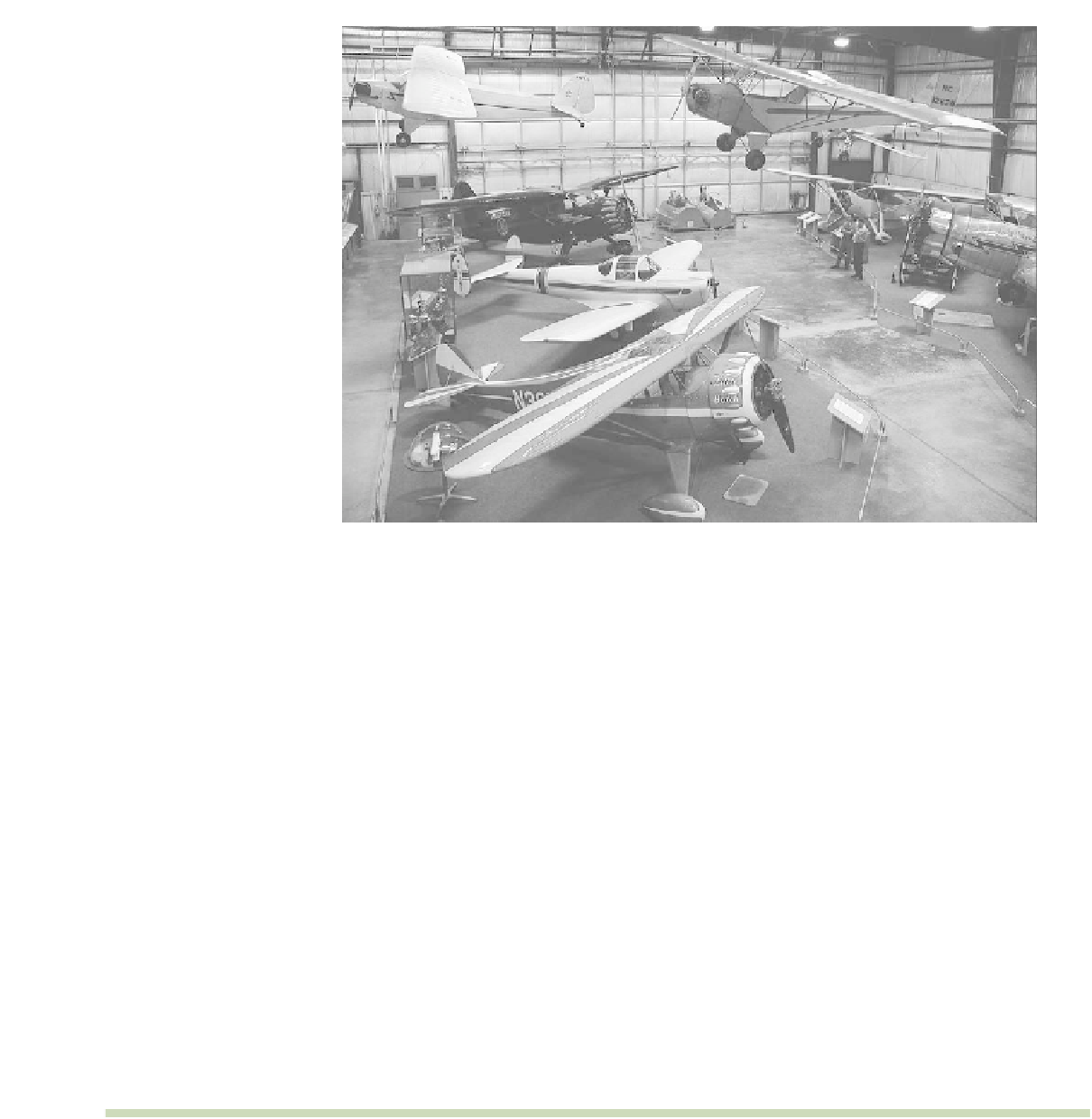Travel Reference
In-Depth Information
Flight museums such as the Virginia Aviation Museum remind us what a short history the airplane has.
PhotobyCyaneLowdon,courtesyoftheScienceMuseumofVirginia.
1969. The Concorde was a marvel of engineering and design. The white bird with its distinctive tilted
needle nose and broad wingspan was an icon of the modern world. The Concorde traveled at 1,350
miles per hour, twice the speed of sound. It
flew at 60,000 feet, almost twice as high as other
commercial jets. Probably no other civilian aircraft has captured the imagination of the traveling
public as the Concorde.
The Concorde carried passengers for the last time on Friday, October 24, 2003, when British
Airways retired its
fleet. Air France retired its
fleet of Concordes on May 31, 2003. Thus, after 34 years,
a chapter in supersonic aviation ended. This marked the
first time in aviation history that a major
innovation was retired without a more advanced technological product replacing it.
British Airways has its
fleet of Concordes on display. They are to be found in the United States at
the Museum of Flight in Seattle and the Intrepid Sea, Air and Space Museum in New York; in Britain at
Airbus UK in Filton, near Bristol, at Manchester Airport, at Heathrow Airport, and at the Museum of
Flight near Edinburgh; and in Barbados, at Grantely Adams Airport in Bridgetown.
Because of its speed, comfort, and safety, air travel is the leading mode of public transportation
today, as measured in revenue passenger miles (one fare-paying passenger transported one mile).
ACCOMMODATIONS
The earliest guest rooms were parts of private dwellings, and travelers were hosted almost like
members of the family. In the Middle East and in the Orient, caravansaries and inns date back to
antiquity. In more modern times,
first the stagecoach and then railroads, steamships, the automobile,
motorcoach, and airplane expanded the need for adequate
. The railroad brought
the downtown city hotel, the automobile and motorcoach brought the motel, and the airplane led to
the boom in accommodations within or near airports. Accommodating
accommodations
—
housing, feeding, and
entertaining
—
travelers is one of the world
'
is most important industries.








Search WWH ::

Custom Search